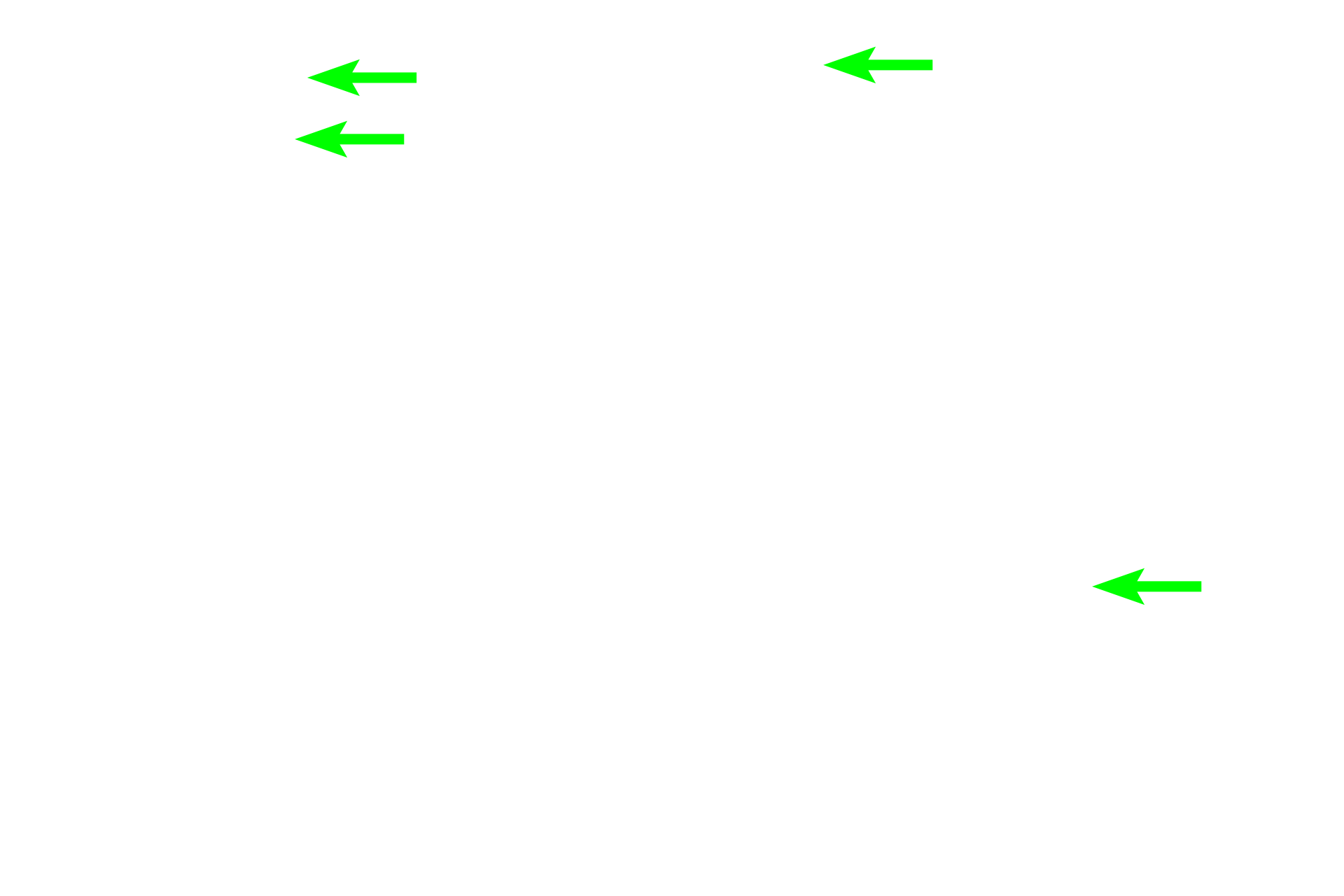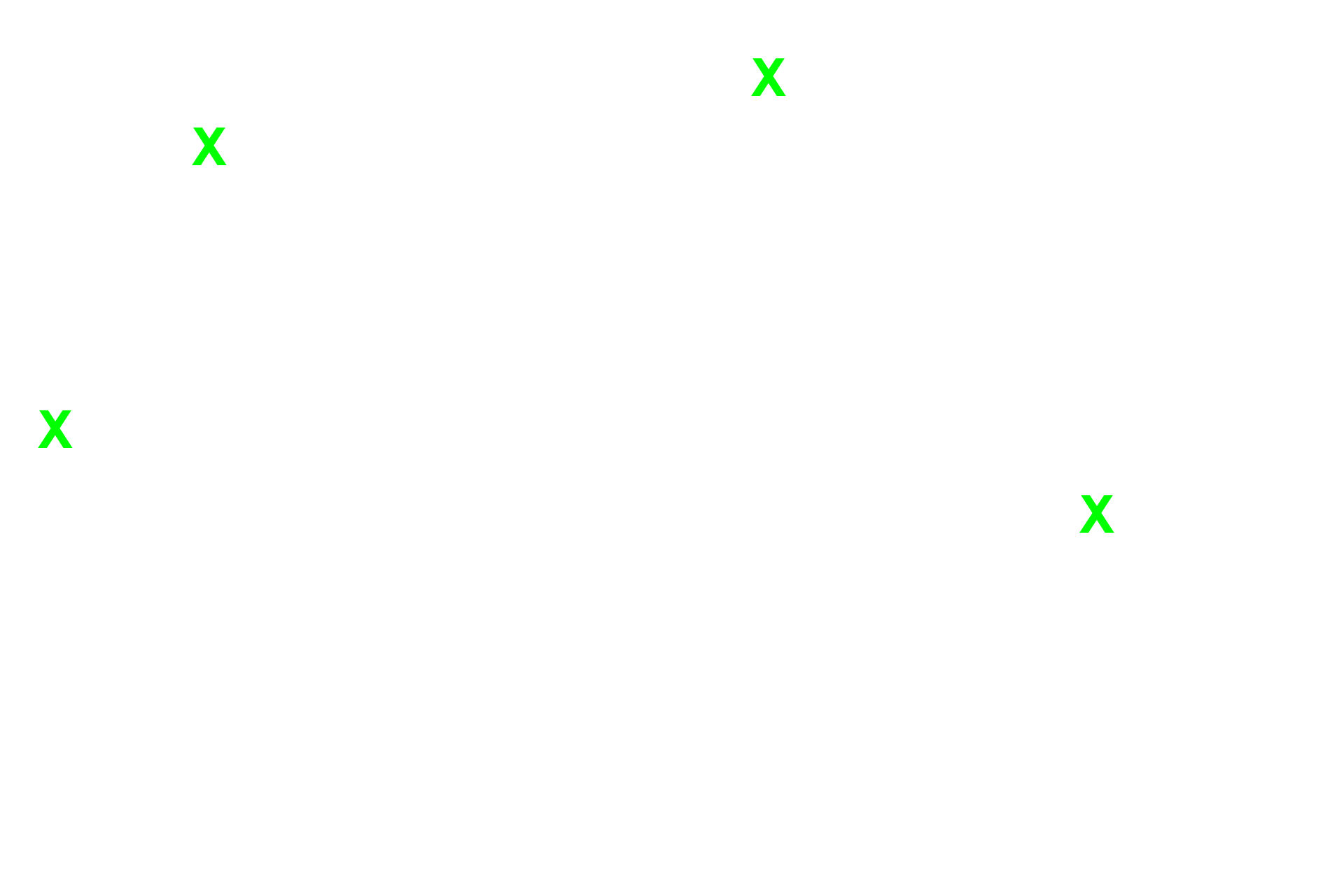
Bone: the tissue
Two spicules of decalcified bone are present, enclosing a central area of bone marrow. All four bone cell types and the extracellular matrix are represented here. Spongy, lamellar bone, 400x

Osteoblasts >
Osteoblasts lie on bony surfaces and secrete osteoid in areas of bone growth. They are also present in the innermost layer of the periosteum.

- Osteoid >
Osteoid is composed of ground substance and collagen fibers. It appears as a pale band lying on the bone surface beneath the active osteoblasts. Osteoid later becomes mineralized to form the matrix.

Bone-lining cells >
Bone-lining cells are present on the surface of bone where no active growth or resorption is occurring. They are thought to provide maintenance and nutritional support for osteocytes and may have osteoprogenitor capacity.

Osteocytes >
Osteocytes are osteoblasts that have surrounded themselves with bony matrix. Osteocytes lie in cavities of bone called lacunae and extend multiple processes through microscopic tunnels called canaliculi to communicate with adjacent cells. Because this is a decalcified bone preparation, canaliculi are difficult to discern. Osteocytes do not form isogenous groups like chondrocytes do.

Osteoclasts >
Osteoclasts lie on bony surfaces and are large cells with multiple nuclei and pink-staining cytoplasm. They breakdown (resorb) bone. Osteoclasts belong to the monocyte lineage and are not related to osteoblasts or osteocytes. As shown here, both bone deposition and bone resorption can occur adjacent to each other along a single portion of bone.

- Howship's lacunae >
As osteoclast resorb bone, they form depressions on the surface called Howship’s lacunae.

Extracellular matrix >
The extracellular matrix consists of mineralized osteoid and fills the area between osteocytes.